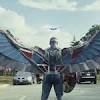Up in the air with the photographer who documents the world from ...

“This is not daredevil stuff,” says 75-year-old fine art photographer Donn Delson as we sit in a helicopter with no door, almost 2,000 feet above London. At this height, the winds are numbing even in May, yet Delson, on the outermost seat, dangles his legs out as a diminutive Big Ben and Tower Bridge pass by beneath us. “On a good day I’ll go out on the (skid),” he says rather nonchalantly, referring to the two nail-bitingly thin helicopter landing bars beneath us. “But harnessed up, of course, and only when we’re hovering.”
While many may turn green at the thought of hanging out of a door-less helicopter, this is the desired set up for Delson — who refuses to put his camera lens anywhere near a window. “It’s really the only way I want to shoot,” he said, back on the ground the following day, of his penchant for working at height. “I do everything on a large scale, because I want people to get the feeling I have when I’m up there.”
The feeling, as it appeared sitting next to Delson in that same sky-high ‘copter, is one of complete calmness. Mid-flight, he grumbles at the fierce winds and asks the pilot to slow the aircraft down to a hover. Suddenly we’re suspended — wobbling in the air somewhere above the river Thames (a designated heli-lane intended to spare the rest of the city in the event of a crash) as Delson reaches under his headset to remove the black cap worn backwards on his head. “Much better,” he says, and gives the signal to fly on.

Delson, who is based in Los Angeles, began his career as an aerial photographer almost a decade ago. He’s since spent over 300 hours in a helicopter, capturing everything from the ephemeral cherry blossoms of Japan to rugged mountain trails hidden in the Red Sea — sometimes from as high as 12,000 feet. His preference to charter private helicopters, which costs him between $800 and $2,500 per hour, is made possible by the fact that this is his 9th career. “I’ve been fortunate to have been an entrepreneur most of my life, and be successful in my business activities,” Delson told CNN. After selling his last company BandMerch — one of the largest entertainment merchandise businesses in the world with Rihanna, Outkast and Billy Joel as his clientele — Delson was able to retire, briefly, before a chance holiday excursion set him on a new path.

“We were on a trip to New Zealand, and my wife and I had the opportunity to go up in a helicopter to see a glacier,” he said. The pilot, noticing a hefty camera strapped around Delson, offered to open the door in order to let him shoot out unencumbered. “My wife said no. I said, ‘Sounds fabulous.’”
There’s an uncanniness to looking down at the world from above. The usual markers of your street-level experience have vanished, as has everyone else in the world. It’s quiet and still. If there wasn’t the looming anxiety of a potential helicopter malfunction, it might even be peaceful. Delson’s work leans into this strange, disembodied feeling by capturing scenes that trick the eye. A parking lot filled with cargo containers that look like musical bars on a xylophone; or the Red Sea’s sprawling canyons and gullies that could be the branches of an ancient tree. “The French term trompe l’oeil was used by painters whose paintings were so lifelike you’d think it’s a picture. I want to make audiences rethink assumptions about what they’re seeing.”
There’s no guarantee Delson will get one of these illusionary shots, however. In Japan, the photographer spent between 20 and 25 hours in the air over the course of a week — in Israel, he flew for a combined 36 hours. But sometimes he won’t take a single picture. “It’s a risk,” Delson said. “I have no idea when I go up whether or not I’m going to find anything.”

Even if he returns empty-handed, Delson believes there is more to be gained from the experience than simply making new work. “I’m definitely different than before I started flying,” he told CNN. “I’ve always considered myself to be a fairly spiritual person, but the perspective that one gets when you have the opportunity to do these things is transformative.”
Journeying back to the office at ground level, London seems a lot smaller. Just a few hours before, the capital was an intimidating, sprawling metropolis home to almost 9 million people. Now it feels almost bijou. The London Eye, what I considered to be the vertiginous pinnacle of the city at 10 years old, now feels laughably miniature; nothing more than a hamster wheel. Even Canary Wharf struggles to seem as imposing once you’ve seen 50-storey landmark One Canada Square from 1,200 feet, shrunken to the size of a Lego brick.
“The world from above, it’s just so different from the world we know,” said Delson. For any newcomers or tourists, struggling with the numerous skyscrapers, boroughs, tube lines or zone demarcations — try stepping into a helicopter. The result is a city that feels much more manageable.


 United Kingdom
United Kingdom Argentina
Argentina  Australia
Australia  Austria
Austria  Brazil
Brazil  Canada
Canada  Germany
Germany  Ireland
Ireland  Italy
Italy  Malaysia
Malaysia  Mexico
Mexico  New Zealand
New Zealand  Poland
Poland  South Africa
South Africa  United States
United States 























